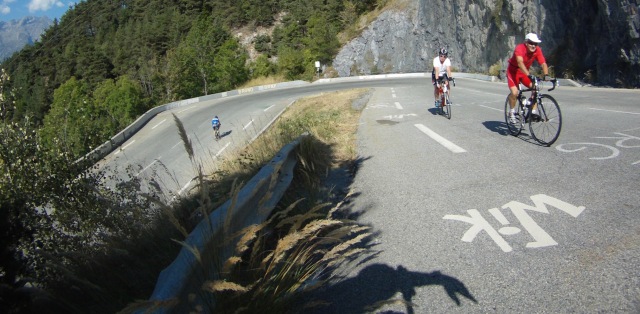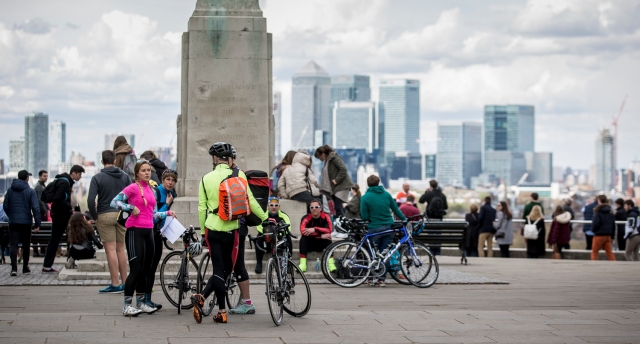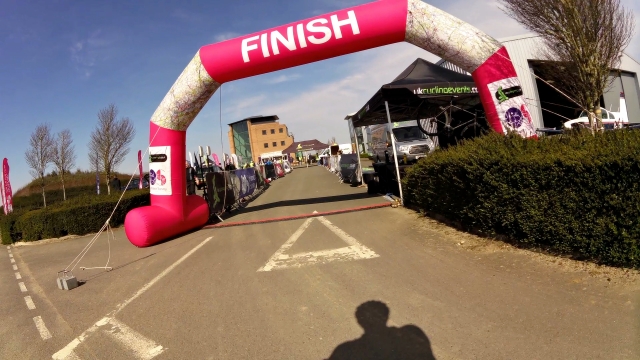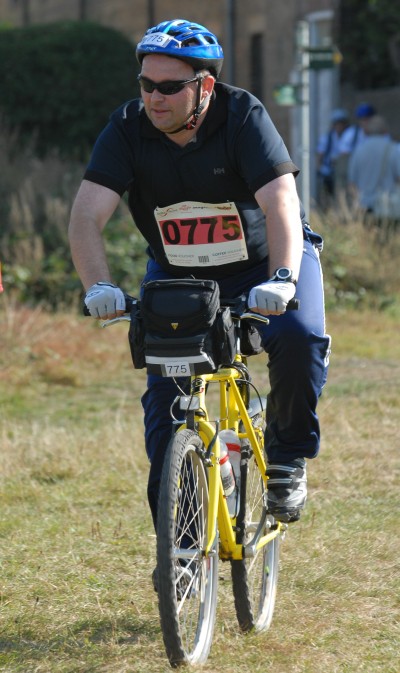PumpingDHuez is a new charity ride organised by the Pumping Marvellous Foundation, designed to tackle one of the iconic Tour de France alpine climbs.
Last weekend I got to join the inaugural ride and fulfilled an ambition of riding up a pro tour Hors Catégorie (HC*) hill climb. The chosen mountain was Alpe d’Huez, a climb that gains almost 3600 feet over 14 kilometers (8.8 miles) of tarmac road. With it’s twenty one hairpin corners, an average gradient of 8% and a summit finish at an altitude of 5988 feet above sea level it certainly isn’t one for the faint hearted.
The adventure started on Thursday with Jeremy and I heading south to the channel tunnel in Folkestone for an early evening crossing to France. Stopping off that evening in a hotel in Reims we met up with the other PumpingDHuez team members (Nick, Karen, Stuart and Darren).

The roadtrip continued on Friday morning with the drive from Reims to our hotel in Les Deux Alpes a short drive from the foot of Alpe d’Huez.

Les Deux Alpes is a major ski resort in the area, however being out of season and with only small areas of glacial ice clinging to the mountain tops the town was very quiet with only a handful of shops and restaurants open in the evening.
 Nevertheless, we found an excellent little restaurant (Le Trappeur) open a short walk up from our hotel (La Meije).
Nevertheless, we found an excellent little restaurant (Le Trappeur) open a short walk up from our hotel (La Meije).
After the meal the waiter brought over a complimentary shot of a local home made alcohol drink – they pick flowers growing on the high pastures in the Alps and steep them in the alcohol for 40 days, its then served in a hot miniature mug. I can imagine it is rather warming on an après-ski evening out!!

I had been looking at the weather forecasts for Alpe d’Huez in the fortnight leading up to the trip, most of them were predicting thunderstorms and rain for the day of our climb, so I was pleasantly surprised to wake up to blue skies on the Saturday morning.

After breakfast we headed down from Les Deux Alpes towards Le Bourg-d’Oisans at the foot of Alpe d’Huez. We found a small car park, about 3 miles from the start of the climb, this was ideal as we could warm up on the ride to the start rather than hit the climb cold.

The first couple of miles of the climb is the steepest, ramping up to 13% almost immediately. As this was the first time I had tackled such a long climb and in fact exercised at altitude I wasn’t going to take any chances with my heart, so my strategy was to only monitor my cadence and heart rate on my Garmin. I broke the climb down into manageable sections with my only goal being to reach the summit.


The 21 numbered corners on Alpe d’Huez make ideal sections to break the climb into. Initially the first corner, then the next hairpin, then two hairpins, when my heart rate reached between 160-165 bpm I stopped at the next hairpin and waited for it to come back down to 130 bpm before setting off again. This made for a frustrating climb at times but I wanted to be extra cautious with this undertaking.
Alpe d’Huez has been nick named the “Dutch Mountain” after Dutch riders won eight of the first fourteen finishes on the mountain in the Tour de France. It’s a mecca for Dutch cyclists all year round and especially spectators during the Tour de France. So much so that corner 7 is affectionally known as “Dutch Corner” as it is claimed by the Dutch supporters every time the tour comes to town. It’s easy to spot if you watch any of the stage climb on the television as the corner will be a sea of orange.
It was particularly nice to see that someone had painted a large yellow heart on the road on Dutch corner.

My strategy of stopping when my heart rate reached 165, resulted in us regularly leapfrogging several riders who were maintaining a more regular pace, I think we overtook the gentleman in red in the photo below about three times as we would pass, stop, pass etc. In hindsight perhaps if I had maintained a slightly slower pace I may not have had to stop so many times – there’s a strategy for next year!

The hairpins provide excellent views out across the valley and the town below, it is amazing to look over the edge and down at small buildings that we had cycled past in what seemed like just a couple of corners ago. You suddenly realise how high you have climbed in such a short distance.


 The main corners are each numbered starting at 21 at the bottom to corner zero at the top.
The main corners are each numbered starting at 21 at the bottom to corner zero at the top.
As well as being numbered each corner has a previous stage winners name on it and the current elevation in metres.
In this example, corner 9 is at 1295m and is named after Steven Rooks from the Netherlands and his stage win in 1988.

 As we approached the last four kilometres, a fellow rider patted me on my shoulder as he passed and then gave a thumbs up and words of encouragement. I caught up with him a little further up the road when he had stopped at the side. He explained that he had read the back of my shirt “Team #PumpingDHuez for Heart Failure” and that his daughter has had three cardiac events. He was pleased to see that we were trying to raise awareness and his reaction made the entire trip all the more worthwhile.
As we approached the last four kilometres, a fellow rider patted me on my shoulder as he passed and then gave a thumbs up and words of encouragement. I caught up with him a little further up the road when he had stopped at the side. He explained that he had read the back of my shirt “Team #PumpingDHuez for Heart Failure” and that his daughter has had three cardiac events. He was pleased to see that we were trying to raise awareness and his reaction made the entire trip all the more worthwhile.
You are not quite done as you ride into the resort of Alpe d’Huez with its roadside cafes and pubs lined with cyclists as the Tour de France stage finishes on the far side of town. Another thumbs up and congratulations from the rider who spoke to us earlier as we passed him again, although this time he was enjoying a large cold beverage in one of the roadside pubs with others from his team.
Turning left at the final roundabout in the town and the road ramps up again for the final sprint to the Tour de France finish line. I was welcomed in by the rest of Team PumpingDHuez, I was very disappointed that the climb took me much longer than I thought it would but elated at the same time that I completed it.

With the climb complete the only thing left was the descent, gravity suddenly became a friend of mine and needless to say it was much quicker going down!
I must say a very big thank you to everyone at Pumping Marvellous who made this trip happen, to Nick and Karen for organising the ride along with the support and photos on the climb. Cyclists Stuart, Darren and especially Jeremy for staying with me all the way up even though he could have gone up much quicker without me and Sam for the Social Media coverage back in the UK over the four day trip.
Fancy the idea of cycling up Alpe D’Huez? Then try it next year (2017) please email hearts@pumpingmarvellous.org for more details.
If you would like to help raise awareness of Heart Failure please share this blog and prehaps consider donating to Pumping Marvellous via my Just Giving page.
Thank you
* HC – French for beyond categorisation and therefore one of the hardest climbs.





















































